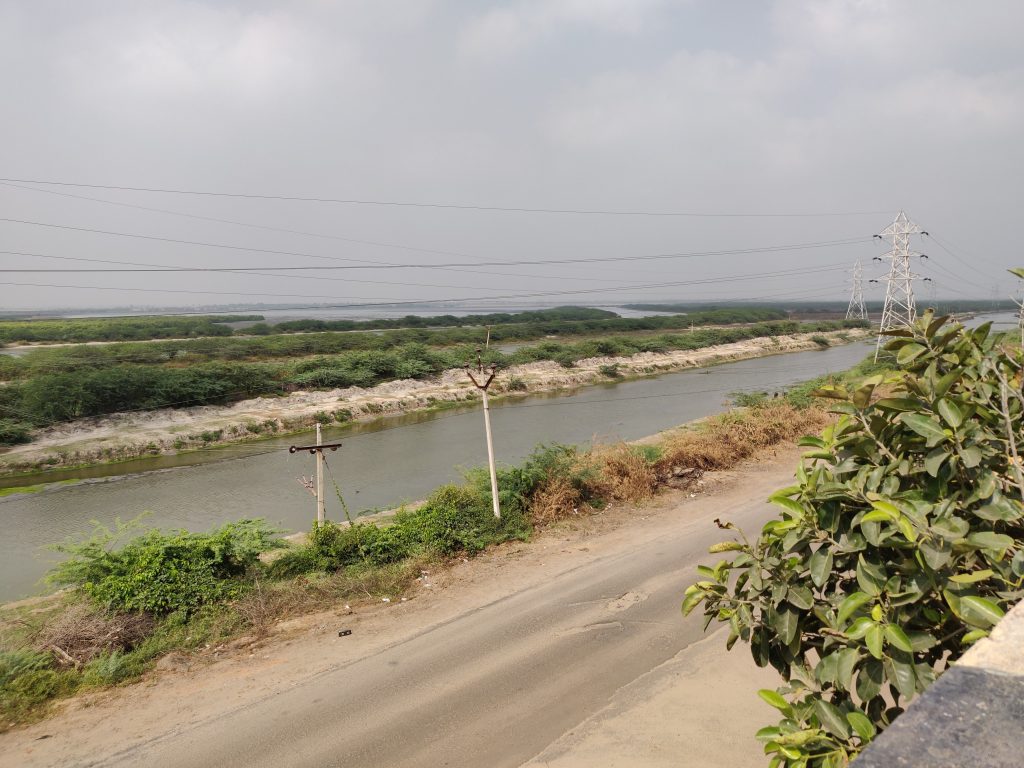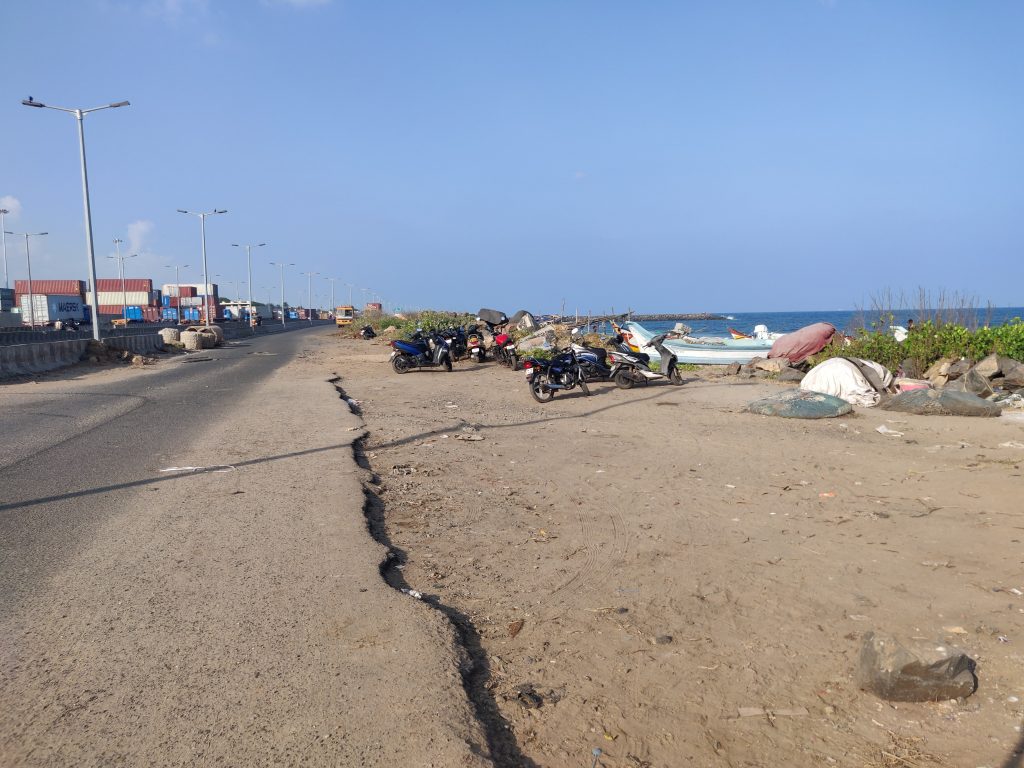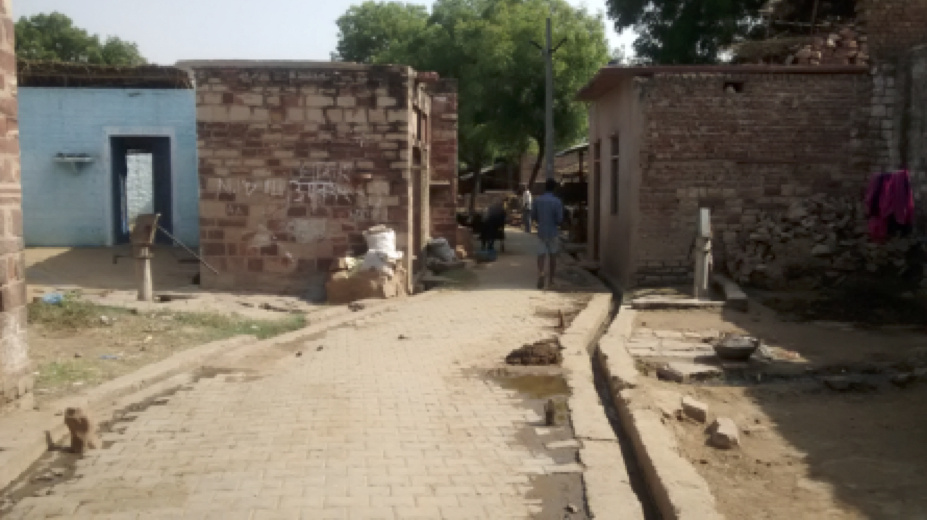Two-wheelers ie., mopeds, scooters and motorbikes in south India are heavily encoded with notions of gender, caste and class which in turn determines the spaces they are expected to occupy and the social function they fulfil. A closer engagement with this particular form of mobility and a mild subversion of its codes can thus helpfully animate urban ethnography in the region including in navigating the researcher’s own positionality in the field. It can also lay bare the relations of alterity that constitute urban space, writes Niranjana R.
_______________________________________________
It was only January of 2020, when Covid-19 was not something we expected would travel into our present in the city of Chennai on the south eastern coast of India. I was meeting a friend and fellow postdoc at the Chennai Book Fair, a massive annual event held in the south-central part of the city. Listening to my plans for ethnographic research on Chennai’s coastline, he made a quick phone call, in the middle of which, he covered his phone to ask me, “Do you drive a two-wheeler?” I nodded yes. He made arrangements with his friend on the phone and then turned back to me, “it’s all set then. How early can you come to Ennore tomorrow?”
In urban studies, the role of mobility in designing and conducting research as well as building theory is well established – walking, driving a car, skate-boarding, bicycling and public transport for embodied mobility, while policies, plans and politics are mobile too. Yet, the discipline has only skimmed at one of the most ubiquitous and prosaic forms of mobility in South and South East Asia – the ‘two-wheeler’. Even this is often related to traffic issues except in the case of Vietnam where urban researchers have linked motorbikes to post-socialist economic mobility[1]. In south India, a ‘two-wheeler’ usually refers to a motorised vehicle like a moped, motorbike or scooter, these categories themselves loaded with notions of class, caste and gender.
I have used two-wheelers – specifically a scooter – to get around, research and report on cities nearly throughout my career, first as a journalist and then as an urban geographer. This has often involved riding on roads that a scooter was ill-suited to handle; staying on and off wheels through the day between meetings or interviews; getting a headache weaving through traffic under the blazing sun. But, I cannot recall riding 120 km in a day, traversing the length of the city and back. This is what I would end up doing the day after I met my friend at the book fair.
Early the following morning I rode my scooter from Besant Nagar in southern Chennai, where my temporary accommodation was, to Ennore at the northern edge of the city, a distance of about 30 km, my hands shaking slightly as I drew to a stop at my destination. Ennore, meaning ‘eight villages’, is a predominantly fishing town situated where the river Kosasthalaiyar meets the sea. My friend’s family lived in Ennore and we had made plans to meet people and make introductions for my fieldwork. When I got to his place, however, he was all set on his scooter – to proceed to Pazhaverkadu, a further 30 km ride north. “We’ll return to Ennore by afternoon, while I’m here I’ll also introduce you to people in Pazhaverkadu,” he said by way of explanation.
Pazhaverkadu is also an agglomeration of fishing villages where the Kosasthalaiyar river, the Pulicat brackish water lagoon and the sea meet. The Ennore-Pazhaverkadu estuarine region, already burdened with polluting industries was in further danger of ecological destruction thanks to plans for a massive port construction. Ennore had a commuter train line from the city centre that I’d taken before, Pazhaverkadu didn’t. So, I took his offer and tried not to think about the 60 km ride back at the end of the day. And so started what would become routine a couple of times each week for the next 6 weeks.

I had already rented the place in south Chennai for the duration of my stay, but ended up meeting supportive participants and interlocutors in north Chennai, where it was difficult to find a place to stay at short notice in any case. So, I found myself kick-starting my scooter at 6-7 am often to avoid traffic as well as get ahead of the rising heat on my ride north.
This, however, turned out to be a particularly useful exercise for pilot fieldwork on the project as I was able to travel the coastal road and observe changes in social ecology as well as fishing practices along the way. I would, of course, need to do focused follow-up research in particular locations and the scooter saddle view can only be fleeting. But, driving a scooter to get around the city in itself offered a rich methodological experience that I have come to value and reflect more seriously on.
There was first the straightforward advantage of being able to follow Chennai’s winding waterways, since a two-wheeler could go ‘off-road’ or on narrow lanes quite easily. This was true in riding through the instructive ecologies of Kattupalli island connecting Ennore and Pazhaverkadu as much as following the flow of water from the Pallikaranai marshland south to the Muttukadu backwaters.

The city has conveniently built a railway line over the Buckingham Canal, a colonial era canal designed in such a way that other canals, marshes and even some rivers drained into it rather than directly into the sea. But, not all transport routes follow water ways; and not all waterways have been destroyed specifically through construction of transport infrastructure. So, the ‘two-wheeler’ mode was invaluable for me in following flows and changes in waterscapes, more efficiently than on foot but without getting as distanced as I would be on a bus or a hired car. So impressed was I by this particular sense of moving along water that I tried affixing a camera to my handlebar to capture the experience, in vain. “You may have a sturdy scooter, it still isn’t a motion capture stabiliser, you know?,” a film-maker acquaintance who was riding along wryly remarked.

This practice of riding along also seemed to establish a comfortable rapport with my participants and interlocutors that would have otherwise been difficult to arrive at. This has to do with my own positionality vis-à-vis many of my research participants and how riding my scooter in unlikely spaces made up for the social differences between us temporarily and to a certain extent. Let me explain that heavily coded statement with a detour to Sneha Krishnan’s (2020) insightful article on a particular brand of scooter popular among young women in south India, the ‘Scooty’.
Complicating the narrative of two-wheelers as liberating to women and integral to rebellious youth culture, Krishnan shows how the iconic ‘Scooty’ brand encodes a non-threatening and respectable femininity in its design and marketing strategies. This, as she explains, is in contrast to older scooter brands that were marketed for family use, with the male office-goer in the driver’s seat; or contemporary motorbikes that sport a heavier build and succeed in targeting only men. A scooter, with its light build and automatic gears, is designed to almost restrict women’s mobility to spaces considered ‘safe’ and ‘respectable’ from a dominant caste and class perspective. The college-going women and young office workers to whom they were marketed were expected to outgrow their ‘two-wheelers’ and move on to cars, taxis or auto-rickshaws by dint of their caste and class privilege. This was an outlook frequently espoused by dominant caste and class consumers and their families as well.
What these brands and their marketing strategists, however, don’t seem to have predicted was the social life the two-wheelers would acquire outside of their best laid plans. Take for instance the assertive ‘pullingo’ (buddies) culture of young men from working class and lowered caste backgrounds in north Chennai. Derided in classist ways, this youth culture has come to be linked closely to the scooter brand ‘Dio’ than any muscular motorbike, subverting the gender and class-coding of two-wheeler types.
Scooters and motorbikes were commonly found parked alongside boats on the eroded coastline of north Chennai because fishers commuted to their boats on two-wheelers, often carrying valuable nets and other equipment. They have, over the years, been displaced inland from their coastal homes by a combination of sea erosion and ‘development’ driven evictions.
So, when any of my research participants asked, ‘do you ride a two-wheeler’ for the purposes of a fieldwork visit to Kattupalli or elsewhere along the coast, it felt a bit like a test of my street-cred as well. Or more accurately, it was a test of how committed I was to get over my caste and class privilege and ride my scooter into spaces considered ‘risky’ according to classist and casteist mores. Whereas, riding along with fishers on their commute to the sea, I was even invited on to one of their boats for a short sample ride one morning (I lasted all of 10 minutes on the boat though). On other occasions, the parked scooter has offered a convenient seating arrangement under tree-shade to conduct interviews where alternative public venues were scarce.

That’s how I would interview B and his friends, who were non-traditional fishers. That is, they were not from the traditional fishing community but sometimes worked on sea-faring boats or practised river fishing on the Kosasthalaiyar as a supplementary occupation. Seated on our two-wheelers under the branches of a tree that grew out from the premises of a temple, we talked about their day jobs and how fishing served both as a leisure activity and added valuable nutrition to their meals. When I was introduced to them the previous week, I promptly asked if I could accompany them on one of their river fishing trips and they responded with a question, “Do you ride a two-wheeler?”
Note
[1] See Truitt (2008) and Hasen (2017). There is limited research on traffic accidents, helmets and other urban issues related to motorcycling in south and south east Asia
References
Truitt, A. (2008). On the back of a motorbike: Middle‐class mobility in Ho Chi Minh City, Vietnam. American ethnologist 35(1), 3-19.
Hansen, A. (2017). Hanoi on wheels: emerging automobility in the land of the motorbike. Mobilities 12(5): 628-645.
Krishnan, S. (2020). Scooty girls are safe girls: risk, respectability and brand assemblages in urban India. Social & Cultural GeographyDOI: 10.1080/14649365.2020.1744705
_______________________________________________
About the research
Niranjana has been studying the many ways of water in Chennai since her doctoral research. Her current postdoctoral project aims to develop an understanding of the urban sea through ethnographic research with coastal fishers and others invested in the city’s coastal ecologies.
Niranjana R. (2020). Exploring Chennai, City of Fish. W Journal. 2 October.
For citation: Niranjana R. (2021). ‘Do you drive a two-wheeler?’ Of risk and relatability while doing ethnographic fieldwork in Chennai. Field Research Methods Lab at LSE (3 March) Blog entry. URL: https://blogs.lse.ac.uk/fieldresearch/2021/03/03/do-you-drive-a-two-wheeler-of-risk-and-relatability-while-doing-ethnographic-fieldwork-in-chennai





